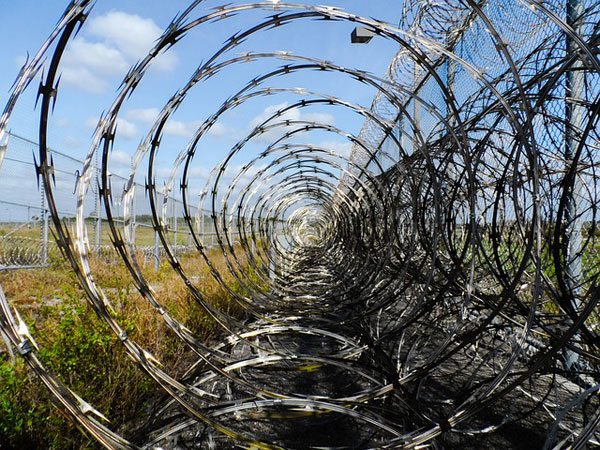
September 24, 2017; Truthout
The Environmental Protection Agency’s online environmental justice map has added a layer that displays the locations of American prisons, showing their positions relative to potential environmental trouble spots. Advocates for prisoner rights are hailing what they see as a promising tool that will help them document environmentally-caused health issues in prisons that are already built as well as possibly prevent the building of other prisons in areas that would jeopardize the health of prisoners.
“It’s huge,” said Panagioti Tsolkas, cofounder of the Prison Ecology Project, in an interview with Zoe Loftus-Farren for Truthout. “It’s one of those things that I think if you just look at it quickly, it seems almost mundane to have added a layer to this existing map…But in the presence of what we’ve been doing over the last three years, of building this national movement and organizing model of looking at prisons from an environmental justice perspective…this is pretty massive.”
The prison layer was added this summer to the EPA’s Environmental Justice Screening and Mapping Tool (or EJSCREEN) by the agency’s Office of Environmental Justice. The 24-year-old office’s mandate is to advocate and be a resource for vulnerable communities, primarily those of color and with low incomes, which are most likely to suffer from poor environmental conditions. On an ominous note, the environmental justice office, along with its $2 million operating budget, is scheduled for elimination in the Trump administration budget, according to ProPublica.
Despite that dark cloud, Tsolkas and other prison rights advocates are celebrating this small victory. The presence of the prison layer on the EJSCREEN map implies that prison projects, both existing and proposed, should consider prisoners’ health. It also gives hope to human rights advocates, who often see the just treatment of prisoners given short shrift.
“People (on the outside) generally aren’t thinking of prisons and jails as environmental problems or as places where people have legitimate concerns about the environment,” said Paul Wright, executive director of the Human Rights Defense Center, in an interview for Earth Island Journal’s recent investigative piece, “America’s Toxic Prisons: The Environmental Injustices of Mass Incarceration.”
Sign up for our free newsletters
Subscribe to NPQ's newsletters to have our top stories delivered directly to your inbox.
By signing up, you agree to our privacy policy and terms of use, and to receive messages from NPQ and our partners.
Across the country, prisoners have been subjected to poor conditions—sometimes fatal—with health risks ranging from contaminated water sources to living in buildings with dangerously high temperatures. In an example highlighted by the Earth Island Journal, inmates at a Texas prison were instructed to deal with the punishing and dehydrating high temperatures by simply drinking a lot of water; it turned out the water they had been given to drink—for 10 years—was contaminated with arsenic.
The Earth Island Journal investigation, done in conjunction with Truthout, found that at least 589 state and federal prisons in the U.S. are located within three miles of a Superfund cleanup site, with 134 of those within one mile. This is perhaps not surprising, given that prisons are often built on land that has been deemed unfit for any other use.
“One of the patterns that we see is where corporations have come in, they pillage the environment, be it by mining, forestry, or whatever,” said Wright in the Earth Island Journal interview, “and then, when everything has been exhausted, when trees have been cut down, every last grain of ore has been ripped from the soil, and everything has been contaminated and poisoned in the process, the final solution is, okay, now we’re going to build a prison here.”
In conjunction with mass incarceration, which NPQ has reported on in the past, the environmental problems facing prisoners—and the communities around prisons—becomes even more stark.
The EPA’s prison mapping tool and the resulting analysis could provide fodder to improve the situation.
“Instead of reacting to abuses in existing prisons or responding to proposals for new prisons, we can actually initiate campaigns,” said Tsolkas in the Truthout interview, “and say, ‘Hey, this overpopulated prison has documented issues with x, y, and x. [sic] So we can create campaigns basically using the EJSCREEN tool.”—Nancy Young













